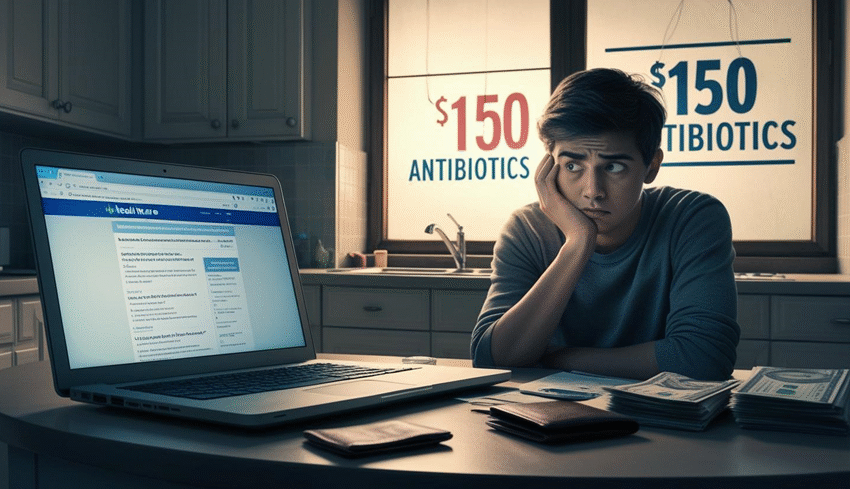Struggling to afford health insurance? Learn about Medicaid, ACA subsidies, and low-cost clinics so you can get care without financial stress. Let’s be real, navigating health insurance feels like trying to assemble furniture without instructions. You know you need it, but the process is confusing, frustrating, and at some point, you’re just hoping nothing falls apart. Now imagine doing that when money is tight. It’s overwhelming, and I get it. I’ve been there.
A few years ago, I was between jobs, living off ramen noodles, and the idea of paying for health insurance seemed impossible. Then I got sick. Nothing major, just a nasty sinus infection, but without insurance, even a doctor’s visit felt like a luxury I couldn’t afford. I ended up waiting it out, which, surprise, made things worse. That’s when I realized that skipping health coverage isn’t saving money. It’s gambling with your well-being.
Why Health Insurance Matters When You’re Broke

Here’s the thing: being uninsured doesn’t mean you won’t get sick or hurt. It just means you’ll pay more when you do. Emergency rooms don’t turn people away, but they’ll send a bill that could wreck your finances for years. I learned that the hard way when a friend ended up with a $3,000 bill for stitches after a kitchen mishap. No insurance, no negotiation, just debt.
That’s where low-income health insurance options come in. They’re not perfect, but they’re a lifeline. Programs like Medicaid, subsidized Marketplace plans, and community health initiatives exist because, frankly, no one should have to choose between rent and antibiotics.

Options That Won’t Break the Bank
Medicaid: This one’s a game-changer if you qualify. It’s free or nearly free, covering everything from doctor visits to hospital stays. I didn’t realize how many people are eligible but never apply because they assume they won’t qualify. Turns out, income limits are higher than you’d think—check your state’s rules.
ACA Marketplace Plans: If you make too much for Medicaid but still can’t afford standard insurance, the Affordable Care Act offers subsidies that slash premiums. I’m talking plans for as little as $20 a month. Yeah, the website can be a headache, but it’s worth slogging through.
Community Health Clinics: No insurance? These places charge based on what you can pay. I’ve used them for check-ups, and while you might wait longer, the care is solid. Plus, they often help you enroll in programs you didn’t know existed.
The “But What If…” Fear And How to Beat It

I know the hesitation: “What if I apply and get denied?” or “What if the coverage is terrible?” Here’s the truth, applying costs nothing, and even basic coverage is better than none. A $10 copay for a doctor’s visit beats a $200 bill. A subsidized ER visit beats bankruptcy.
And let’s bust a myth: “I’m young/healthy, I don’t need it.” Cool, until you slip on ice, break an ankle, and owe $15,000. Or until a routine blood test shows something that needs treatment. Insurance isn’t just for catastrophes; it’s for keeping small problems from becoming financial disasters.
How to Make It Work Without Losing Your Mind
- Start with Your State’s Medicaid Site: Google “[Your State] Medicaid eligibility.” It’s the fastest way to see if you qualify.
- Try Healthcare.gov During Open Enrollment Or special enrollment if you’ve had a life change (lost a job, had a baby, etc.).
- Ask for Help: Local nonprofits, libraries, even hospitals often have counselors who’ll guide you for free.

- Final Thought: It’s Okay to Need Help
There’s this weird stigma around using “low-income” programs, like it’s some kind of failure. Nah. They exist because life is expensive, and health isn’t a privilege—it’s a right. Getting coverage isn’t admitting defeat; it’s being smart.
So if you’re uninsured and stressed about it, take one step today. Maybe it’s a 10-minute eligibility check. Maybe it’s calling a clinic. Future you will be so grateful. And hey, if I could figure it out between ramen dinners, you’ve got this.
References
Centers for Medicare & Medicaid Services. (2024). Basic health program. U.S. Department of Health and Human Services. https://www.medicaid.gov/basic-health-program/index.html
Healthcare.gov. (2023). Medicaid & CHIP coverage. U.S. Centers for Medicare & Medicaid Services. https://www.healthcare.gov/medicaid-chip/
Artiga, S., & Ubri, P. (2022). Health insurance coverage in low-income populations. Kaiser Family Foundation. https://www.kff.org/racial-equity-and-health-policy/issue-brief/health-insurance-coverage-in-low-income-populations/
Finkelstein, A., Hendren, N., & Shepard, M. (2017). Subsidizing health insurance for low-income adults: Evidence from Massachusetts (NBER Working Paper No. 23668). National Bureau of Economic Research. https://www.nber.org/papers/w23668

